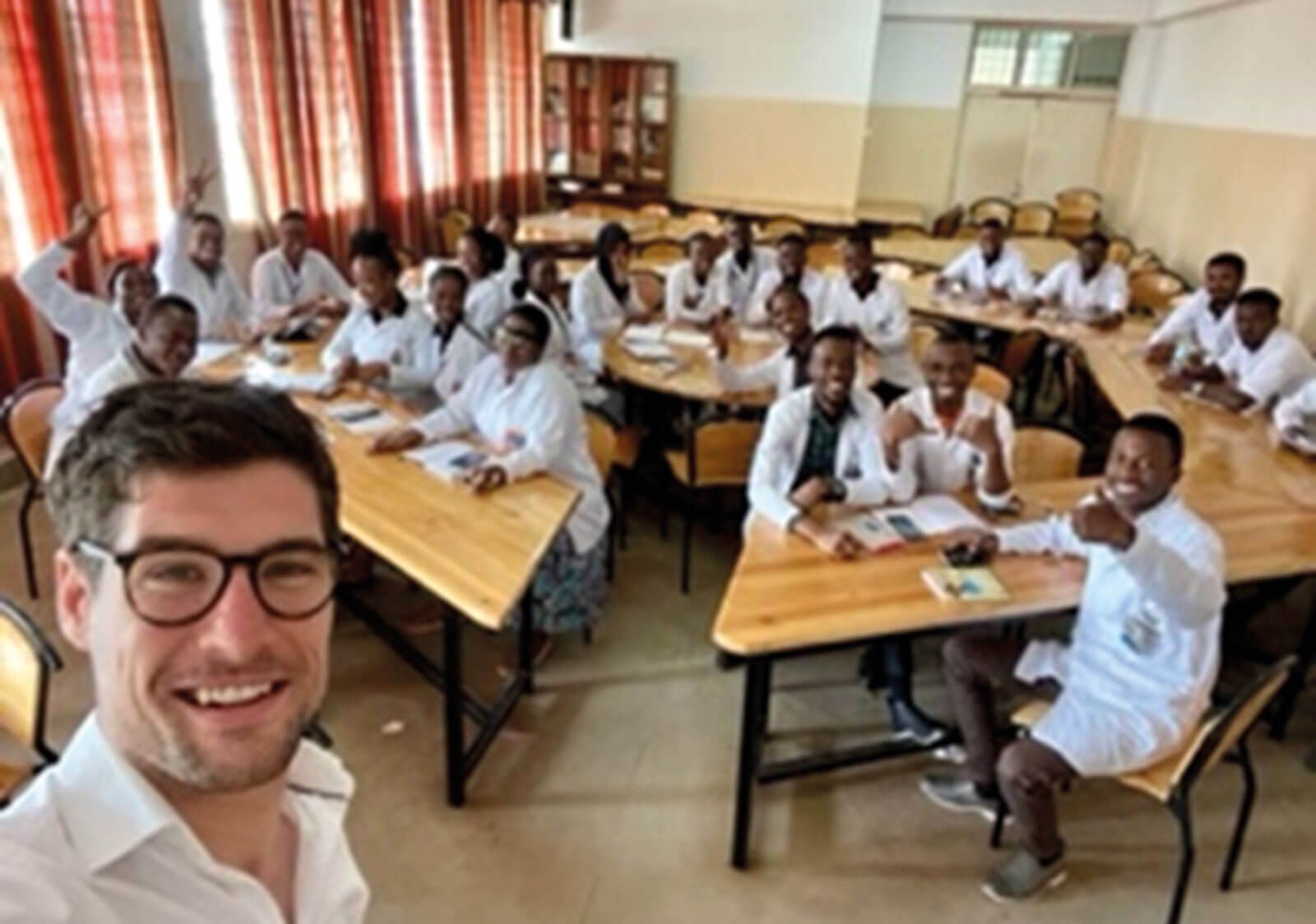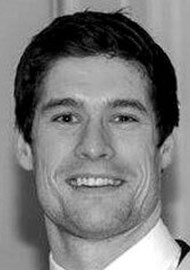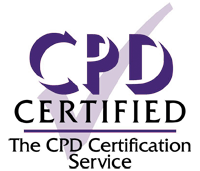In May 2023, I travelled to Moshi, Tanzania, where I visited Kilimanjaro Christian Medical Centre (KCMC) – a trip which was made possible through the collaborative efforts of the British Association of Urological Surgeons (BAUS) Urolink and with the support of The Urology Foundation (TUF), as part of their fellowship programme.
Urolink [1] is a committee of BAUS which aims to encourage and support the establishment of links with individual departments and organisations in low or middle-income countries (LMICs). It has been in existence for more than 30 years [2] and has helped innumerable urologists gain experience in global urology and the opportunity to observe healthcare in poorly resourced areas of the world [3]. Its scope for help is dictated by the local surgeons [3,4]; however, mentoring by relevantly experienced urologists about the clinical and operative management of challenging conditions relevant to the locality is the most common paradigm [5–8]. It does this by helping develop regional training hubs which can then disseminate their accumulated learning to other hospitals in the locality, region, or across international borders [9].
Urolink has a website with a myriad of open-access resources for trainees to dip into on the BAUS platform [10], and it is a great help in planning any trip to a centre offering global surgical experience. Its 2022 series of articles about working in LMICs [3] was a valuable resource for learning about the breadth and scope of experience that may be accrued by visiting one of its linked centres [11].
TUF is a UK-based organisation [12] and is the only charity in the UK and Ireland that campaigns, fundraises and helps research across the spectrum of urological disease. By supporting training, improving surgical skills, and awarding grants it provides opportunities for surgeons to travel to various parts of the world, practise new techniques, or gain different insights into the delivery of urological care in different environments. Since 2021 it has provided funding for several annually awarded fellowships for trainees to experience healthcare outside the UK, particularly in LMIC healthcare settings [13].

KCMC main entrance.
KCMC is a 630-bed tertiary referral hospital, situated on the outskirts of Moshi, Tanzania. The Institute of Urology at KCMC has established itself as one of the primary centres for urological surgery in East Africa and has earned recognition as a key training hub within Tanzania and beyond. Its alumni have come from Ethiopia, Kenya, Malawi, Rwanda, and Uganda as well as Tanzania.
Over the years KCMC has become the longest-standing association with Urolink, accommodating many UK-based urologists over 30 years [14]. It has also hosted numerous workshops – notably, the biennial Lester Eschelman workshop [15], in honour of the late Jacob Lester Eshelman (1921–2009), a Mennonite surgeon who dedicated much of his life to the advancement of urology in East Africa [16].
In the early stages of my registrar training, I was fortunate to undertake a visit to Hôpital Général de Grand Yoff, in Senegal, to help establish a laparoscopic urology workshop [17] which has since gained accreditation from the Royal College of Surgeons of Edinburgh (RCSEd). Subsequently, I became an active member of the BAUS Urolink committee and, motivated by my previous experiences, I decided to embark on another international visit as part of the TUF fellowship. Following a request from KCMC for Urolink’s support to improve their resident teaching programme, its chair, Suzie Venn, and I engaged in discussions with the department head, Dr Frank Bright, to formulate a plan to deliver a series of teaching seminars to the KCMC residents during my visit.

Sunset over Kilimanjaro.
Upon arriving in Moshi, I was immediately taken by the beauty of the Tanzanian countryside and by the presence of Mount Kilimanjaro, standing tall over KCMC. Just as captivating was the warm and hospitable nature of the Tanzanian people I encountered. Undertaking global health trips alone can be daunting for trainees, but any reservations I had were swiftly dispelled when I met the host team. Chief Resident Dr Dennis Shirima and over 20 other residents training in the unit, along with Dr Bright, were very welcoming, and their camaraderie and support immediately made me feel at ease.

The KCMC resident team.
I learned that most of the residents were enrolled in the Tanzanian Master of Medicine (MMed) government programme [18] whilst others were undertaking the College of Surgeons of East, Central, and South Africa (COSECSA) fellowship programme in urology [19]. Both programmes typically span four years but whilst the MMed programme involved biannual examinations run locally by KCMC, COSECSA residents undergo rigorous assessment, with external examinations similar in format to the FRCS(Urol) in the UK.
My typical day began with a morning ward round at 07:30; preceded by a prayer led by the nursing team. The ward round itself was conducted at a deliberate and thoughtful pace, creating an excellent platform for the residents to share their knowledge with the numerous medical students on placement in the department.

Morning rounds.
Students took turns in delivering a detailed presentation of the inpatients, and the leisurely rhythm, lasting up to 90 minutes, allowed for more in-depth discussions and meaningful exchange of knowledge and ideas about patient management. This unhurried approach was a refreshing departure from the swift pre-theatre rounds we are accustomed to back in the UK. Notable cases included posterior urethral trauma following a motorcycle accident, a common major injury in sub-Saharan Africa [5], a paediatric case of Wilms’ tumour and a young patient recovering from bladder exstrophy closure [6]; this had been undertaken during a paediatric urology workshop the previous week.
After the ward rounds, I conducted interactive teaching sessions for the medical students on a daily basis, covering a range of core topics such as assessment and management of lower urinary tract symptoms, urological malignancy, and urological emergencies. I was very impressed by their knowledge and eagerness to absorb new information, whilst their enthusiastic participation in the teaching sessions made the experience incredibly fulfilling for me.

Teaching the brilliant medical students.
From the outset, Dennis and I had devised an afternoon educational programme for the residents who, I was surprised to learn, were largely expected to follow a self-directed educational programme, without the structure of formal teaching days or mandatory portfolio requirements that we are so accustomed to in the UK. Consequently, formal teaching was warmly welcomed by the entire team. The programme focused on the core topics in MMed and COSECSA curricula. The format featured micro-teaching by both the residents and I, discussing relevant international guidelines and the supporting literature. We also utilised interactive case discussions as a platform for learning, sharing the varying experiences and practices there are between high-income countries (HICs) and LMICs [20]. This structured approach fostered a dynamic learning environment and promoted the exchange of valuable insights amongst all residents.
These sessions also facilitated international collaboration in teaching, something that Urolink had been heavily involved with during the covid pandemic [21]. One memorable highlight during our week was a Zoom talk on prostate cancer delivered by Jonathan Noel, Consultant at Guy’s and St Thomas’ hospital, made possible after Jonathan expressed his interest in contributing to the educational programme. It was fantastic to be able to connect the two institutions for the exchange of knowledge and expertise – an invaluable addition to the programme and one which all the residents were very grateful for. In one of the other sessions, we enjoyed a series of formal case presentations that one of the residents had prepared covering two current inpatients – one of fungal sepsis in a patient with HIV, and the other of a large renal mass with IVC extension.
These sessions accrued a very encouraging response from the residents, attracting an impressive attendance of up to 25 participants each day. The engagement and feedback from them was very positive and encouraging, especially considering the residents had to plan their attendance around busy daily schedules including clinic, ward, and operative commitments. Despite their demanding workload, the residents displayed a genuine eagerness to participate in the teaching seminars, showcasing their commitment to continuous learning and professional development. The high level of interest and active participation in the sessions added to the overall success and impact of the educational programme.
The interactive discussions proved to be immensely beneficial for me as well. It provided valuable insights into the local assessment and management practices for typical presentations, such as visible haematuria. I learned that in Tanzania, patients undergo general or spinal anaesthesia rigid cystoscopy due to a lack of flexible cystoscopes. I also gained a deeper understanding of the local approach to the management of stone disease as the absence of a LASER, lithoclast, or other endoscopic method of stone destruction means that almost all calculi are managed by an open uretero- or pyelolithotomy. This highlighted the resource challenge of surgery in the African environment, broadening my perspectives about adapting to different healthcare settings, and learning to make the most of available resources to be able to provide effective patient care when resources are limited.
As a registrar in the final months of my training in the UK, I was also eager to gain a comprehensive understanding of the day-to-day clinical experience of patient management at KCMC. I found observing the residents during outpatient clinics of great value. Whilst most of the cases were not dissimilar to those seen in general urology outpatient settings in the UK, such as raised prostate specific antigen (PSA), phimosis, and assessment / management of loin pain and lower urinary tract symptoms, there were many very different conditions presenting. Many patients had travelled exceptionally long distances for medical review - including some with significant urethral trauma secondary to motorcycle injuries, others with advanced urological malignancies and one case of a critically unwell patient presenting with purple urine bag syndrome secondary to a severe catheter-associated urinary tract infection. I also had the opportunity to observe local anaesthetic procedures performed by the residents in a separate dedicated room. I learned that a DRE-guided prostate biopsy was being performed because the transrectal ultrasound (TRUS) probe was malfunctioning. The residents explained their experiences and emphasised that it was not a procedure for the faint-hearted, recounting some painful inadvertent mishaps they had encountered!
Additionally, I spent time in the operating theatre, where there were two dedicated urology theatres – one for open procedures and the other for endoscopic surgery. I noticed that patients were sometimes directly admitted to the ward from the clinic for operations – for example, those who presented with acute urinary retention were admitted for TURP. One memorable case involved a livestock farmer who had travelled a considerable distance to the clinic with severe loin pain. After a CT scan revealed a 5x2cm mid-ureteric calculus, he was promptly admitted and underwent an open ureterolithotomy the following day. I had the privilege of following this patient’s journey and observing the surgical procedure, which was my first exposure to such an operation. In the subsequent days, I observed the patient’s recovery as he recuperated on the ward and I was intrigued to see the en-bloc calculus wrapped around his wrist which he would later take home, a customary practice in Tanzanian culture. The experience of observing clinical practices and witnessing these unique cases allowed me to gain valuable insights into the challenges and resourceful approaches taken in delivering urological care in this setting.
One of the advantages of undertaking this visit alone was that it provided me with the freedom to get to know each resident on a personal level and this was one of the most rewarding aspects of my trip to KCMC. This allowed me to learn about their experiences, aspirations, and challenges – each resident had a unique journey that helped to shape their passion for urology. I was particularly fascinated by the story of one COSECSA resident who had relocated from The Gambia to Tanzania to pursue his urology training. His decision was sparked by an inspiring Urolink visit to his home institution in previous years, a testament to the impact of these collaborations. Learning about the challenges he faced to return home and visit his family, with the journey taking up to two days at significant expense, left me humbled by the dedication and resilience exhibited by doctors in training in sub-Saharan Africa. Making connections with the residents I met during my trip to KCMC was immensely gratifying, with our shared experiences fostering a genuine camaraderie. I remain in close contact with the residents I met during the trip, and since returning I have collaborated with the BJUI Knowledge [22] team who have very kindly arranged for all urology residents at KCMC to receive complimentary access to their extensive online educational platform to augment their ongoing learning and development. Furthermore, there are plans in place for additional visits from senior UK-based trainees to KCMC to continue the educational programme as part of the TUF fellowship initiative.
I could not leave Tanzania without immersing myself in the beauty and culture of the country. On my day off, I explored the Materuni waterfalls, Kikuletwa hot springs, and the coffee plantations nestled in the foothills of Mount Kilimanjaro – a unique opportunity to understand the art and science behind coffee cultivation and processing with members of the Chagga tribe sharing their traditional knowledge and techniques, as well as sampling the delicious local cuisine! I returned home with unforgettable memories and an appreciation for the beauty that Tanzania has to offer.

Chief Resident Dennis and the author.
The benefits of visiting LMIC healthcare settings as a trainee cannot be overstated and I would encourage trainees to seize any opportunity they may have to experience healthcare in the developing world. Such an experience undoubtedly deepens one’s appreciation and gratitude for the privilege of training, and practising, in the UK. Witnessing first-hand the challenges faced by healthcare professionals in resource-limited settings, and the incredible dedication with which they deliver care, instils a profound sense of humility. This exposure fosters a greater understanding of global healthcare and the pressing need for collaboration and support to bridge the healthcare disparities around the world. It was an eye-opening experience for me, and I believe that such trips have the potential to benefit other trainees as well.
I would like to take this opportunity to thank TUF for their generous contribution to my trip, Suzie Venn and Steve Payne of the Urolink committee for their support and encouragement, and finally the host team at KCMC for their hospitality, particularly Chief Resident Dennis.
References
1. https://www.baus.org.uk/professionals/
urolink/urolink_home.aspx
2. https://www.baus.org.uk/professionals/
urolink/about_urolink_2017.aspx
3. Payne S (Ed). Urolink: 20 years on. BJU Int 2022.
https://bjui-journals.onlinelibrary.wiley.com/
journal/1464410x/urolink-vi
4. Payne SR, Chalwe M. Understanding the needs of low-income countries: how urologists can help. BJU Int 2022;129:9–16.
5. Payne SR, Anderson PCB, Spasojević N, et al. Male urethral stricture disease. Why management guidelines are challenging in low-income countries. BJU Int 2022;130:157–65.
6. Coyle D, Nidaw E, Getachew H, et al. Paediatric urology in sub-Saharan Africa: Challenges and opportunities. BJU Int 2022;130:277–84.
7. Watson GM, Payne SR, Kunitsky K, et al. Stone disease in low middle income countries. could augmented reality have a role in its management? BJU Int 2022;130:18–25.
8. Whiting D, Shane AI, Pope R, et al. Female urinary incontinence in sub-Saharan Africa. BJU Int 2022;130:543–9.
9. Venn SN, Mabedi C, Ngowy BN, et al. Disseminating surgical experience for sustainable benefits – the Urolink experience. BJU Int 2022;129:661–7.
10. https://www.baus.org.uk/professionals/
urolink/learning_resources.aspx
11. https://www.baus.org.uk/professionals/urolink/
current_link_centres.aspx
12. https://www.theurologyfoundation.org/
13. http://www.theurologyfoundation.org/
professionals/who-and-what-we-fund/
urolink/679-tuf-urolink-fellowships
14. https://www.baus.org.uk/professionals/
urolink/tanzania.aspx
15. https://www.baus.org.uk/_userfiles/pages/files/urolink/
UROLINK%20visit%20to%20KCMC%20Website.pdf
16. https://mla.bethelks.edu/mediawiki/
index.php/Eshleman,_J._Lester_(1921-2009)
17. Trail M, Thwaini A, Niang L, Aslam Z. Delivering a laparoscopic urology workshop in West Africa: our initial experience in Senegal. Urology News 2020;24(6):14–17.
18. http://kcmuco.ac.tz/master-of-medicine/
19. https://www.cosecsa.org/wp-content/uploads/2023/10/FCS-URO-Regulations-syllabus-2016.pdf
20 Payne SR. What is different about urology in low-middle income countries? BJU Int 2022;130:703–4.
21. Ng M, Chamileke N, Mapalunga V, et al. The benefits of virtual learning webinars to both low and high-income countries. BJU Int 2022;129:434–41.
22. https://bjuiknowledge.bjuinternational.com
[All links accessed 30 January 2024]
Declaration of competing interests: None declared.
Acknowledgement: With thanks to Stephen Payne for his help with this article.







